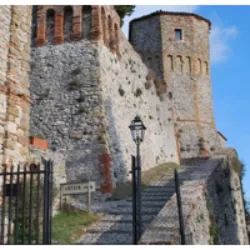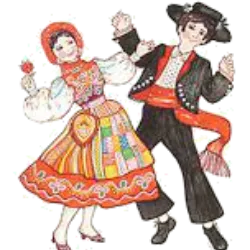The legend of Azzurrina originates from Montebello Castle

The legend of Azzurrina originates from Montebello Castle and involves a girl called Guendalina, who was albino. She was the daughter of a feudal man and, due to her albino condition, was seen as devilish, which led her mother to dye her hair black. Guendalina grew up cloistered in the castle, forbidden to leave and watched by guards. On June 21, 1375, the girl disappeared while playing with a ball. She went down the stairs after the ball and was never seen again. The guards couldn't find her. Years later, the legend of Azzurrina gained notoriety with reports that, every summer solstice, it is possible to hear the girl playing in the castle's corridors and see her light blue figure.
Darius Palace in Venice is famous for its haunted legend

Darius Palace in Venice is famous for its haunted legend. Built in 1487, the dark story begins with Giovanni Dario's daughter, Marietta, who faced a series of tragedies after moving into the palace with her husband. The Dario family suffered a financial decline and faced suicides. The palace has passed through different owners over the years, and they have all faced personal tragedies such as deaths, bankruptcies and fatal accidents. In 2002, bassist John Entwistle rented the palace and died a week later of a heart attack. Although there is no concrete proof, it is believed that a curse hangs over the palace, making it undesirable and haunted, which has contributed to its reputation and its reluctance to be purchased.
Test yourself with one of these challenges 👇
Discover some interesting facts about Italian Folklore
The legend of the Marble Falls known as "Cascate del Marmore"

The legend of the Marble Falls known as "Cascate del Marmore", located in Umbria, Italy, tells the love story of Velino, a young shepherd, and Nera, a nymph. They were separated by the gods, jealous of their love. Nera was transformed into a river, while Velinus became the river that flows into the marble falls. Taking pity on the separated lovers, a god turned Vellum into a waterfall, allowing him to reunite with Nera once again. The water of Velino flows into the waters of Nera, and the white foam that results is often associated with the white marble, which gives the waterfall its name.
The Legend of Lake Carezza, in northern Italy

The Legend of Lake Carezza, in northern Italy, is a folk story about a sorcerer named Masaré who tried to conquer the water nymph, Ondina, who tended the lake. After several failed attempts to gift Ondina with gold, she enchanted him and made him sink into the lake in revenge. The lake, known for its crystal clear waters and colorful reflections, reflects the colors of the rainbow in honor of the nymph. It's a legend that adds a magical touch to this stunning natural landscape.
The legend of the Lariosaurus

The legend of the Lariosaurus is the Italian version of the famous Loch Ness monster, with sightings of a similar creature in Lake Como in Italy. According to folklore, hunters claimed to have seen a forty-foot-long, red-scaled, reptile-like creature in the lake in 1946, and upon firing their rifles, the creature disappeared into the lake. It was named Lariosaurus balsami, in reference to a prehistoric reptile. One skeptical researcher attributes these sightings to more rational explanations, such as otters, hoaxes, or groups of fish.
Italian folklore has rich stories about these mysterious

Italian folklore has rich stories about these mysterious creatures that transform from humans into wolves on full moon nights. In ancient times, Italians believed that werewolves, known as Lupo Mannaro, were a feared presence, especially during the nights of the full moon. It was said that these creatures could be humans cursed by the church, condemned to wander in wolf form. A legend tells the story of a priest in Ragusa who faced a werewolf, wounding it with a wooden crucifix, which reversed the curse that bound him to that form. The night of December 25th is believed to be particularly significant for werewolves. Legends varied as to ways to prevent or cure the transformation, involving methods such as cold water, throwing metal keys, or even using silver bullets to attack the werewolf.
The "Fierce Beast" is a legendary figure in Italian folklore

The "Fierce Beast" is a legendary figure in Italian folklore, particularly associated with the Piedmont region of northern Italy. It is a mysterious creature, often described as a ferocious animal such as a wolf or lion, that terrorized villages and rural areas during the late 18th and early 19th centuries. It caused deaths and damage, generating panic among the local population. The creature's true identity and origin remain a mystery, and several theories have been proposed, including the possibility that it was a lone wolf or an escaped zoo lion. The legend of the Fierce Beast persists as part of regional folklore and continues to intrigue folklore scholars.
Test yourself with one of these challenges 👇
HOME



